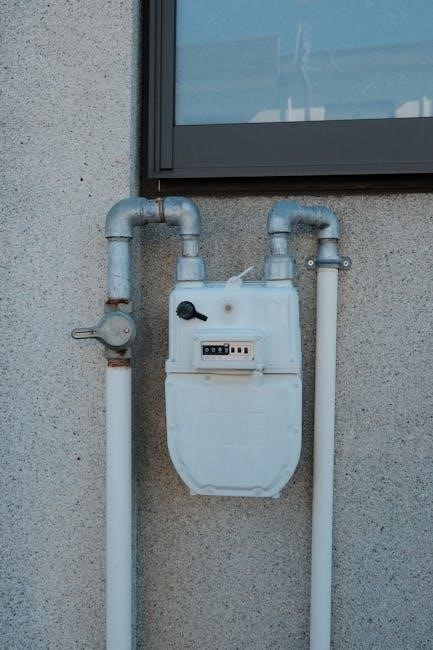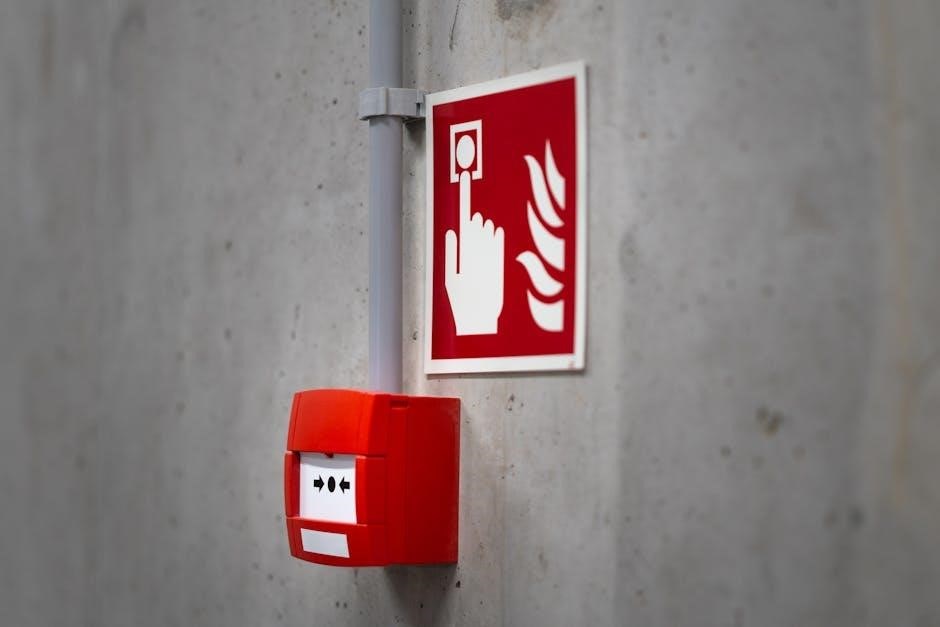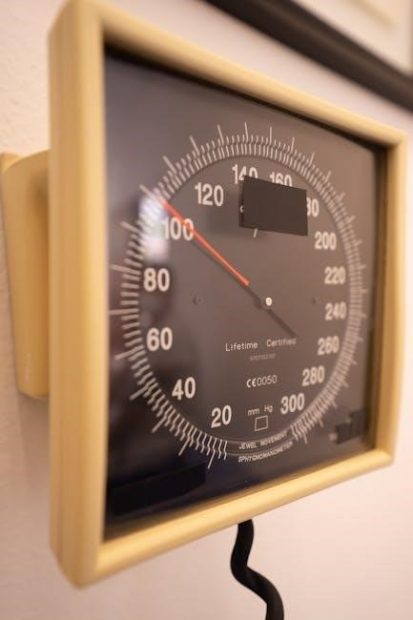This manual provides essential guidance for installing, maintaining, and troubleshooting Watts pressure regulators. It ensures optimal performance, safety, and longevity of water supply systems. Designed for professionals and homeowners, the guide offers detailed instructions and technical specifications to regulate water pressure effectively. Proper use of this manual helps prevent system damage and ensures compliance with safety standards.
Overview of Watts Pressure Regulators
Watts pressure regulators are precision-engineered devices designed to control and reduce water pressure in residential, commercial, and industrial systems. These regulators ensure a consistent downstream pressure, protecting plumbing components from damage caused by excessive pressure. Available in various models, such as the Series 1156F, 223, and LF25AUB-Z3, they cater to different applications, including water supply systems, steam, and thermal expansion relief. Featuring lead-free designs, diaphragm-actuated mechanisms, and adjustable settings, these regulators are durable and versatile. They comply with safety standards and are designed for easy installation and maintenance. By regulating pressure effectively, Watts pressure regulators help conserve water, reduce energy costs, and enhance system performance. Their reliability and adaptability make them a preferred choice for professionals and homeowners alike, ensuring safe and efficient water pressure management.
Importance of Proper Installation and Maintenance
Proper installation and maintenance of Watts pressure regulators are crucial for ensuring optimal performance, safety, and system longevity. Incorrect installation can lead to fluctuating water pressure, equipment damage, and potential safety hazards. Regular maintenance, such as cleaning, inspecting, and replacing worn parts, prevents premature wear and ensures consistent pressure regulation. Failure to maintain the regulator can result in inaccurate pressure settings, leading to reduced water flow or excessive pressure that damages plumbing fixtures. Following the manufacturer’s guidelines for installation and maintenance ensures compliance with safety standards and extends the lifespan of the regulator. Additionally, proper maintenance helps prevent issues like thermal expansion damage and ensures the system operates efficiently under varying conditions. Regular checks and adjustments also help in identifying potential problems early, avoiding costly repairs and system downtime. Proper care ensures reliable operation and protects the entire water supply system from pressure-related risks.
Key Features of Watts Pressure Regulators
Watts pressure regulators are known for their durability, precision, and versatility in water supply systems. These regulators feature adjustable downstream pressure settings, allowing users to customize water pressure according to specific needs. They are designed with advanced mechanisms, such as diaphragm-based systems, to ensure consistent and accurate pressure control. Many models, like the LF25AUB-Z3 series, are lead-free, making them safe for potable water applications. These regulators also offer high maximum inlet pressure capabilities and compatibility with a wide range of operating temperatures. Additionally, they include built-in protection against excess pressure, ensuring system safety and longevity. Their compact designs and easy-to-use adjustment features make installation and maintenance straightforward. Watts regulators are also compliant with industry safety standards, providing reliable performance for residential, commercial, and industrial applications. Their compatibility with various accessories enhances overall system functionality and efficiency.

Types of Watts Pressure Regulators
Watts offers a variety of pressure regulators, including Series 1156F for feed water, Series 223 and 223S for commercial use, and the LF25AUB-Z3 lead-free model. These regulators cater to different applications, ensuring precise pressure control and compatibility with various water supply systems. Each type is designed to meet specific needs, from residential to industrial settings, providing reliable performance and durability. They are engineered with advanced features to regulate water pressure effectively and safely.
Series 1156F Feed Water Pressure Regulators
The Series 1156F Feed Water Pressure Regulators are designed to regulate water pressure in boiler feed applications, ensuring consistent and reliable performance. These regulators are suitable for residential and commercial systems, offering precise control over inlet pressure. They feature adjustable downstream pressure settings and are compatible with a wide range of water supply conditions. The Series 1156F is known for its durability and ease of installation, making it a popular choice for maintaining optimal water pressure in heating systems. Models like the T156B and N256 are included in this series, catering to different sizing needs (1/2″ to 1″). Proper installation and maintenance, as outlined in the manual, are crucial for ensuring long-term functionality and safety. These regulators are an essential component for protecting boilers and associated equipment from excessive pressure.
Series 223 and 223S Pressure Regulators
The Series 223 and 223S Pressure Regulators are high-performance solutions designed for commercial, institutional, and industrial applications. These regulators are engineered to reduce incoming water pressure to a predetermined level, ensuring protection for downstream plumbing systems. The Series 223 is a standard model, while the 223S includes an integral strainer, enhancing debris protection. Both models are known for their durability, ease of adjustment, and compatibility with a wide range of water supply conditions. They are ideal for use in water distribution systems, heating plants, and industrial processes. The regulators feature an adjustable downstream pressure range and are designed to meet stringent safety and performance standards. Proper installation and maintenance, as outlined in the manual, are essential for optimal functionality and longevity. These regulators are a reliable choice for managing water pressure in demanding environments.
Series LF25AUB-Z3 Lead Free Pressure Reducing Valves
The Series LF25AUB-Z3 Lead Free Pressure Reducing Valves are designed for residential and commercial water systems, ensuring compliance with lead-free regulations. These valves reduce incoming water pressure to a safe, consistent level, protecting plumbing fixtures and appliances. Featuring an adjustable downstream pressure range, they offer flexibility for various system requirements. The lead-free design ensures water quality and safety, making them ideal for potable water applications. With a durable construction and easy adjustment, these valves provide reliable performance. They are suitable for installation in new or existing systems, offering a cost-effective solution for pressure regulation. The manual provides detailed installation, adjustment, and maintenance instructions to ensure optimal functionality and longevity. These valves are a trusted choice for safe and efficient water pressure management in lead-free environments.
DRV Diaphragm Pressure Reducing Valve

The DRV Diaphragm Pressure Reducing Valve is a reliable solution for regulating water pressure in residential and light commercial systems. Designed with a durable diaphragm, it ensures accurate pressure control and long-lasting performance. The valve is factory preset to 50psi but can be adjusted to meet specific system requirements. Its compact design and ease of installation make it a popular choice for plumbers and homeowners. The DRV valve is compatible with a wide range of water supply systems and operates effectively under varying conditions. It features a bypass for thermal expansion relief, enhancing system safety. Regular maintenance, as outlined in the manual, ensures optimal functionality and extends the valve’s lifespan. With its lead-free construction and user-friendly adjustment mechanism, the DRV valve is a trusted option for safe and efficient pressure regulation in water systems.

Installation Guidelines
This section provides step-by-step installation instructions, recommended tools, and diagrams to ensure proper setup. Follow instructions carefully to avoid leaks or system damage.

Step-by-Step Installation Process
Begin by selecting a suitable location for the regulator, ensuring accessibility for future maintenance. Shut off the main water supply and drain the system to prevent water flow during installation. Use an adjustable wrench to disconnect existing fittings, taking care not to damage pipes. Mount the regulator securely, following the manufacturer’s orientation guidelines. Connect the inlet and outlet ports, ensuring proper alignment and tightening to avoid leaks. For Series 1156F and 223 models, install a strainer upstream to protect the regulator from debris. Refer to the provided diagrams for precise connections. After installation, slowly open the main valve to pressurize the system, checking for leaks at all joints. Adjust the regulator to the desired pressure setting by loosening the locknut and turning the adjustment bolt. Finally, perform a thorough system test to ensure proper operation. Always consult the specific model’s instructions for any unique requirements.
Recommended Tools and Materials
For a successful installation of Watts pressure regulators, gather the following tools and materials. An adjustable wrench or pipe wrench is essential for connecting and tightening fittings. A screwdriver, preferably a flathead, is needed for adjusting the regulator’s settings. Pipe cutters or a hacksaw may be required to trim pipes to the correct length. Teflon tape or pipe dope should be used to seal threaded connections. A pressure gauge is recommended to verify the system’s pressure accurately. Additionally, ensure you have appropriate fittings, such as NPT connectors, to match your piping system. For specific models like the Series 1156F, a strainer is necessary to protect the regulator from debris. Optional accessories include expansion tanks and thermal relief valves to enhance system performance and safety. Always refer to the manual for model-specific requirements.
Installation Diagrams and Schematics
Clear installation diagrams and schematics are provided in the Watts pressure regulator manual to guide users through the setup process. These visuals detail the regulator’s components, correct piping layouts, and installation sequences. The diagrams show inlet and outlet port connections, adjustment mechanisms, and proper placement in the water supply system. Additional schematics may illustrate optional configurations, such as integrating expansion tanks or relief valves. Referencing these diagrams ensures compliance with manufacturer guidelines and prevents installation errors. For specific models like the Series 1156F, detailed piping configurations are highlighted to maintain system integrity. Always cross-check the schematics with the actual regulator to verify compatibility and correct assembly.
Installation Location and Accessibility
Choosing the right location for installing a Watts pressure regulator is crucial for system functionality and maintenance. The regulator should be installed in an easily accessible area, preferably near the water supply entrance, to facilitate regular inspections and adjustments. Avoid placing it in confined spaces or areas prone to moisture accumulation, as this can hinder accessibility and promote corrosion. For systems requiring multiple regulators, ensure each is strategically positioned to serve specific zones without interfering with other components. Proper location ensures compliance with safety standards and simplifies future servicing. Always follow local plumbing codes and manufacturer recommendations for optimal placement and accessibility.

Maintenance and Adjustment
Regular maintenance ensures optimal performance and longevity. Inspect for wear, clean components, and verify pressure settings. Follow manufacturer guidelines to prevent issues and maintain system efficiency.
Regular Maintenance Schedule
Regular maintenance is crucial to ensure the optimal performance and longevity of Watts pressure regulators. Start with monthly inspections to check for signs of wear, corrosion, or leaks. Clean the regulator and its components every three months to prevent dirt buildup. Annually, inspect the diaphragm and springs for damage or degradation, replacing them if necessary. Additionally, verify that the pressure settings remain accurate and adjust them if needed. Lubricate moving parts every six months to maintain smooth operation. Always follow the manufacturer’s guidelines for specific maintenance tasks. Ensure the regulator is easily accessible for servicing. Keep a record of all maintenance activities for future reference. By adhering to this schedule, you can prevent potential issues and ensure consistent water pressure regulation.
Adjusting the Pressure Setting
Adjusting the pressure setting on your Watts pressure regulator is a straightforward process. Begin by loosening the lock nut located on the adjusting bolt or screw. Turn the adjusting bolt clockwise to increase the downstream pressure or counterclockwise to decrease it. Use a pressure gauge to monitor the setting and ensure accuracy. Once the desired pressure is achieved, tighten the lock nut securely to maintain the setting. Avoid over-tightening, as this could damage the regulator. Regularly check the pressure to ensure it remains stable, especially after adjustments. For specific models, refer to the manufacturer’s instructions for any unique adjustment procedures. Proper adjustment ensures optimal performance and protects your water supply system from excess pressure. Always follow safety guidelines when working with pressurized systems to avoid potential hazards.
Troubleshooting Common Issues
Common issues with Watts pressure regulators include fluctuating pressure, leaks, or unusual noises. If the pressure is not holding steady, check the adjustment bolt and lock nut to ensure they are secure. Leaks may occur due to worn gaskets or loose connections; inspect and tighten any loose fittings. Noise could indicate debris in the valve or improper installation; Clean or replace the filter screen if clogged and ensure the regulator is installed correctly. If the pressure gauge shows incorrect readings, verify calibration or replace the gauge. Always monitor inlet and downstream pressures to ensure they are within the recommended range. Refer to the manual for specific troubleshooting steps for your model. Regular maintenance and inspections can help prevent these issues and ensure reliable performance. If problems persist, consider replacing worn or faulty parts.
Replacing Worn or Damaged Parts
Regularly inspect Watts pressure regulators for worn or damaged components, such as gaskets, diaphragms, or O-rings. To replace parts, first shut off the water supply and relieve system pressure. Disassemble the regulator by loosening bolts or nuts in the correct sequence as outlined in the manual. Remove the faulty component and install the new one, ensuring proper alignment and seating. Reassemble the regulator in the reverse order of disassembly, tightening all connections securely. Test the system by gradually turning on the water supply and checking for leaks or proper pressure regulation. Always use genuine Watts replacement parts to maintain optimal performance and safety. If unsure about any step, consult the manual or contact a qualified technician. Regular replacement of worn parts prevents system failure and ensures reliable operation.

Technical Specifications
Watts pressure regulators feature maximum inlet pressures up to 300psi and operating temperatures between 33°F to 160°F. They are compatible with various water supply systems and comply with safety standards, ensuring reliable and efficient performance in both residential and commercial applications.
Maximum Inlet Pressure and Operating Temperature
Watts pressure regulators are designed to handle a maximum inlet pressure of up to 300psi, ensuring reliable performance in high-pressure water supply systems. The operating temperature range is between 33°F and 160°F, making them suitable for a wide variety of residential and commercial applications. These specifications are clearly outlined in the manual to ensure proper installation and operation. Exceeding these limits may result in system damage or reduced efficiency. Always refer to the manual for specific model details, as some regulators may have slightly different ratings. Proper adherence to these specifications ensures optimal performance, safety, and longevity of the regulator and connected water supply systems.

Adjustable Downstream Pressure Range
Watts pressure regulators offer an adjustable downstream pressure range, allowing users to set a specific output pressure suited to their system requirements. The Series 1156F, for instance, can regulate pressure between 5psi and 125psi, while the Series 223 and LF25AUB-Z3 models provide similar or slightly varied ranges. This adjustability ensures compatibility with diverse water supply systems, from residential to commercial setups. The manual provides clear instructions on how to adjust the downstream pressure using the regulator’s adjustment bolt or screw, ensuring precise control. Proper adjustment is critical to protect downstream plumbing and appliances from excessive pressure. Always refer to the specific model’s specifications in the manual for exact pressure range details and adjustment procedures. This feature enhances system safety and efficiency, making Watts regulators versatile for various applications.
Compatibility with Water Supply Systems
Watts pressure regulators are designed to seamlessly integrate with various water supply systems, ensuring reliable performance across different configurations. They are compatible with both residential and commercial systems, handling a wide range of inlet pressures and flow rates. The regulators work efficiently with cold water lines and can be installed in vertical or horizontal orientations, offering flexibility for different setups. Additionally, they are suitable for use with expansion tanks and thermal expansion relief valves, enhancing system safety. Their compatibility extends to low-pressure systems when paired with booster pumps, ensuring consistent water pressure. This adaptability makes Watts regulators a versatile choice for maintaining optimal water pressure in diverse applications, from small homes to large industrial complexes. Always consult the manual for specific compatibility details and installation recommendations tailored to your system requirements.
Compliance with Safety Standards
Watts pressure regulators are designed to meet rigorous safety standards, ensuring reliable performance and protection of water supply systems. They comply with ASSE, IAPMO, and NSF certifications, guaranteeing adherence to industry safety protocols. These regulators incorporate features like thermal expansion relief and pressure relief valves to prevent system damage from excess pressure. Compliance with safety standards ensures that the regulators operate within safe pressure limits, protecting both the system and users. Regular testing and certification processes verify their performance under various conditions, providing peace of mind for installers and homeowners. By adhering to these standards, Watts pressure regulators maintain a high level of safety and reliability in residential and commercial applications. Always refer to the manual for specific compliance details relevant to your system requirements.

Safety Considerations
Ensure proper installation of pressure relief and thermal expansion valves to protect against excess pressure. Regular inspections and adherence to safety standards are crucial for system integrity and user safety.
Pressure Relief Valve Requirements
Pressure relief valves are essential for safeguarding water systems from over-pressurization. They must be installed to protect against excessive pressure buildup, ensuring system integrity and user safety. The Watts pressure regulator manual specifies that relief valves should be rated for the maximum inlet pressure of the system, typically up to 300psi. These valves must be compatible with the water supply system, including temperature limits, to prevent damage or failure. Regular inspections and maintenance are required to ensure proper function. The adjustable downstream pressure range of Watts regulators, such as the DRV model, allows for precise control, while compliance with safety standards ensures reliability. Proper installation and sizing of relief valves are critical to prevent potential hazards and maintain optimal system performance. Always refer to the manual for specific requirements and guidelines.
Thermal Expansion Relief Valve Recommendations
Thermal expansion relief valves are crucial for protecting water systems from pressure increases caused by temperature fluctuations. As water heats and expands, it can create excessive pressure in closed systems, potentially leading to damage. Watts recommends installing a thermal expansion relief valve, such as the 530C calibrated pressure relief valve, to safely release excess pressure. This valve should be positioned between the pressure regulator and the downstream system to ensure effective pressure management. Regular inspections and maintenance are essential to verify proper function. Compatibility with system specifications, including maximum operating temperature and pressure limits, must be ensured. Always follow the manufacturer’s guidelines for installation and sizing to maintain system safety and performance. Properly configured thermal expansion relief valves help prevent damage and ensure long-term reliability of water supply systems.
Protection Against Excess Pressure
Protecting water systems from excess pressure is essential to prevent damage to appliances, pipes, and valves. Watts pressure regulators are designed to regulate water pressure effectively, but additional measures are recommended to ensure system safety. Installing a pressure relief valve, such as the Watts 530C calibrated pressure relief valve, is highly recommended. This valve releases excess pressure, safeguarding the system from potential damage caused by pressure surges or thermal expansion. Proper placement of the relief valve, typically near the pressure regulator, ensures optimal performance. Regular inspections and maintenance of these components are crucial to verify their functionality. Always follow the manufacturer’s guidelines for installation and sizing to ensure compatibility with your system’s specifications. By integrating these protective measures, you can maintain a safe and reliable water supply system while preventing costly repairs. Proper protection against excess pressure is a critical step in ensuring long-term system integrity.
Emergency Shutdown Procedures
In the event of a pressure-related emergency, immediate action is required to prevent system damage or safety hazards. First, locate the main shut-off valve upstream of the Watts pressure regulator and close it to stop water flow. Next, switch off the power supply if the system is electrically operated. If excess pressure is detected, activate the pressure relief valve to safely release the pressure. After stabilizing the system, inspect the regulator and connected components for any damage. Consult a professional if issues persist or if the regulator needs recalibration. Regular maintenance and adherence to safety guidelines can help prevent emergencies. Always ensure the regulator is easily accessible for quick interventions. Following these steps ensures a safe and effective response to potential pressure-related emergencies, minimizing risks to personnel and system integrity.

Compatible Accessories
Compatible accessories include expansion tanks, thermal relief valves, specialized filters, and booster pumps to enhance system performance, water purity, and pressure regulation efficiency in Watts pressure regulator setups.
Expansion Tanks and Relief Valves
Expansion tanks and relief valves are essential accessories for Watts pressure regulator systems. These components help manage thermal expansion in water supply lines, preventing damage from excess pressure buildup. Expansion tanks, such as the Watts DET series, are designed to absorb pressure fluctuations caused by water heating and cooling. Relief valves, like the Watts 530C, provide an emergency release mechanism to protect the system from over-pressurization. Together, they ensure safe and stable operation of the pressure regulator and connected plumbing. Proper installation and sizing of these accessories are critical to maintain system integrity and prevent potential hazards. Always consult the manual for compatibility and sizing recommendations to ensure optimal performance and safety. These accessories are vital for maintaining the longevity and efficiency of the entire water supply system. Regular maintenance is recommended to ensure their functionality remains uncompromised.
Specialized Filters for Water Purity
Specialized filters are crucial for maintaining water purity in systems equipped with Watts pressure regulators. These filters are designed to remove impurities, sediment, and contaminants from the water supply, ensuring clean and safe water flow. Watts Premier supplies high-quality filters, such as those with specific part numbers, to address various water quality concerns. They are particularly effective in reverse osmosis systems, where water purity is critical. These filters prevent debris and minerals from affecting the regulator’s performance, reducing the risk of clogging or corrosion. Regular filter maintenance is essential to uphold water quality and system efficiency. Compatible with Watts pressure regulators, these filters ensure optimal water treatment and protection for downstream plumbing components. By integrating specialized filters, users can enhance the overall performance and longevity of their water supply systems while maintaining superior water quality standards. Proper installation and replacement are detailed in the manual to guarantee effectiveness.
Booster Pumps for Low Pressure Systems
Booster pumps are essential for low-pressure water systems to ensure adequate water flow and pressure. When incoming water pressure is below 40psi, a booster pump is necessary to maintain optimal performance in systems using Watts pressure regulators. These pumps work in conjunction with pressure-reducing valves to stabilize and enhance water pressure, preventing fluctuations that could damage plumbing or appliances. Booster pumps are particularly beneficial in residential and commercial settings where water demand is high. By integrating a booster pump, users can achieve a consistent water supply, protecting downstream components and ensuring reliable operation. Proper installation and maintenance, as outlined in the Watts manual, are critical to maximize the efficiency and longevity of both the booster pump and the pressure regulator system. This combination ensures a stable and pressurized water supply, meeting the needs of various applications effectively. Regular checks and maintenance are recommended to uphold system performance;
Recommended Tubing and Fittings
When installing Watts pressure regulators, it’s crucial to use compatible tubing and fittings to ensure system integrity and safety. Copper tubing should be avoided for reverse osmosis water systems, as pure water can leach copper, causing taste issues and potential pinholes. Instead, use high-quality, food-grade materials like PEX or PVC, which resist corrosion and contamination. Watts Premier offers specialized filters to enhance water purity, further protecting the system. Tubing should be sized appropriately to handle maximum inlet pressure and operating temperatures. Always follow local plumbing codes and safety standards when selecting fittings. Regular inspections and replacements of worn or damaged tubing are essential to prevent leaks and maintain optimal pressure regulation. Properly matched tubing and fittings ensure reliable performance and longevity of the entire water supply system, aligning with Watts’ commitment to safety and efficiency.
